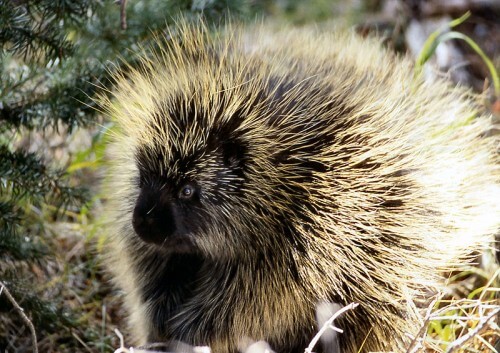Understanding the mechanism of penetration and exit of the thornporcupine can help develop better medical devices.

Anyone who has experienced a prick from a porcupine thorn knows that once the thorn gets stuck in the tissue, it is difficult to get it out. Inspired by the porcupine, the Angiotech company previously developed the Quill - a surgical thread for suturing tissues, based on the structure of the microscopic stings that characterize the porcupine spine. These days researchers from MIT hope to learn from the unique structure of the porcupine spine, and to develop medical devices inspired by it for additional uses.
In this study, the researchers characterized for the first time the forces necessary for the porcupine spine to enter and exit the tissue. They created artificial models with characteristics similar to the spine of a porcupine, with the aim of designing needles that are less painful, or glues that can connect internal tissues. The importance of effective connection of tissues is known mainly in gastrointestinal and intestinal surgeries, areas where there is a high percentage (10-15%) of leaks after surgery.
In order to find a solution for connecting the tissues, the researchers turned to examining the North American porcupine. This porcupine has about 3,000 crazy defense spikes. The spines reach a length of several centimeters and in the four millimeters at the end of the spine there are microscopic stings.
These stings tear the tissue and thereby allow the easy penetration of the thorn - similar to cutting a tomato with a serrated knife. On the other hand, when pulling the thorn out, the stingers serve as anchors in the tissue and make it difficult to remove. The force required to remove a barbed thorn is four times greater than the force required to remove a barbed thorn at the end.
In order to test the possibility of developing a better connection method, the researchers created a sort of patch with spikes and an array of stings on one side. They found that the energy required to remove the patch with the stings was thirty times higher than the energy required to remove the patch without the stings. In light of the findings, this patch with stings could be used in the future to connect tissues after surgery.
Inspired by the porcupine, the researchers are currently working on developing an attachment device made of biodegradable materials, which will break down in the body after recovery.

5 תגובות
Aryeh Seter
Hedgehog spines are just spines... They don't have the annoying hooks that spur spines have. Durban spikes, not only do they have hooks on them - they also detach from the animal's body and get stuck deep... ask any dog who has met a durban 🙂
lion,
This proves that even when you are quite sure of something you may be wrong, for your attention also in other matters...
This is the North American porcupine and not a hedgehog as you mistakenly thought.
On the other hand, your comment about the spelling of the word spur is absolutely correct!
Oren, thank you!
I have been looking for my childhood photo for a long time…..
I'm not a zoologist but I'm pretty sure that the things here should be attributed to a hedgehog and not a spur. Also the picture, as far as I know, is of a hedgehog. By the way: a spur and not a spur.
Enlarged image:
https://www.hayadan.org.il/images/content3/2013/02/800px-Porcupine_NPS11952-500×353.jpg